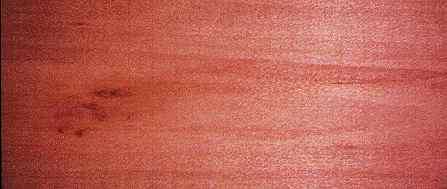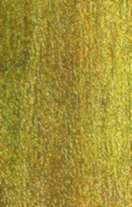 
Terentang (Campnosperma auriculata)
Family: Anacardiaceae
Common names: Arrida, Karamati, Kelinting, Melumut, Napan, Serantang, Serentang, Terentang, Toemboes
Distributed in: Indonesia, Malaysia (Oceania and S.E. Asia)
Distribution overview: Malaysia and Indonesia.
Common uses: Balusters, Blockboard, Boat building (general), Boat building, Boxes and crates, Building construction, Building materials, Cabinetmaking, Canoes, Casks, Chairs, Chests, Coffins, Concealed parts (Furniture), Construction, Cutting surfaces, Desks, Dining-room furniture, Dowell pins, Dowells, Drawer sides, Drawing boards, Fine furniture, Floor lamps, Furniture , Furniture components, Furniture squares or stock, Furniture, Hardboards, Hatracks, Heavy construction, Interior construction, Interior trim, Kitchen cabinets, Lifeboats, Light construction, Living-room suites, Matchboxes, Matches, Millwork, Moldings, Novelties, Office furniture, Packing cases, Particleboard, Plywood corestock, Plywood, Pulp/Paper products, Radio - stereo - TV cabinets, Shipbuilding, Toys, Turnery
Environment profile: Generally secure within its natural habitat
Colors: the heart isPale red to pink, Pink greyand the sapwoodColor not distinct from heartwood, Paler than heartwood.The grain isWeak (figure), the textureVery fineand the lusterSlightly lustrous
Natural durability: Susceptible to attack from termites (Isoptera), Susceptible to marine borer attack
Odor: No specific smell or taste
Silica Content: Contains silica
LightInduced Color Change: Darker
Kiln Schedules: Drying (speed) is fast
Drying Defects: Slight spring/bow, Special attention required
Ease of Drying: Special attention required
Tree Identification: Bole/stem form is buttressed
Comments: Abnormal Wood Tissue - Reaction wood, which can adversely affect machining and other properties may be present. Reaction wood may be present
Blunting Effect: Slight effect
Boring: Easy
Cutting Resistance: Low resistance
Nailing: Holds nails well
Planing: Easy to plane
Resistance to Impregnation: Sapwood is moderately treatable
Resistance to Splitting: Good
Veneering qualities: Easy to cut
Turning: Turning qualities are poor
- Numerical data Metric
- Numerical data English
- Strength properties
- References
 |
 |
 |
 |
| Item |
Green |
Dry |
Metric |
| Specific Gravity |
0,26 |
0,28 |
|
| Density |
|
384 |
kg/m3 |
| Bending Strength |
305 |
422 |
kg/cm2 |
| Crushing Strength |
12 |
22 |
kg/cm2 |
| Hardness |
|
148 |
kg |
| Impact Strength |
32 |
38 |
cm |
| Shearing Strength |
|
75 |
kg/cm2 |
| Stiffness |
57 |
70 |
1000 kg/cm2 |
| Tangential Shrinkage |
5 |
|
% |
| Radial Shrinkage |
2 |
|
% |
| Weight |
384 |
336 |
kg/m3 |
| Maximum Load |
0,28 |
0,35 |
cm-kg/cm3 |
| Toughness |
|
|
cm-kg |
| Static Bending |
163 |
219 |
kg/cm2 |
|
 |  |  |  | | Item | Green | Dry | English | | Bending Strength | 4343 | 6004 | psi | | Crushing Strength | 172 | 314 | psi | | Density | | 24 | lbs/ft3 | | Hardness | | 327 | lbs | | Impact Strength | 13 | 15 | inches | | Maximum Crushing Strength | 2210 | 3624 | psi | | Shearing Strength | | 1076 | psi | | Static Bending | 2322 | 3119 | psi | | Stiffness | 813 | 1000 | 1000 psi | | Work to Maximum Load | 4 | 5 | inch-lbs/in3 | | Specific Gravity | 0.26 | 0.28 | | | Weight | 24 | 21 | lbs/ft3 | | Radial Shrinkage | 2 | | % | | Tangential Shrinkage | 5 | | % | | Volumetric Shrinkage | 8 | | % | |
Density (dry weight) = 23-30 lbs/cu. ft.
Shrinkage, Tangential = very small
Weight = light
Toughness-Hammer drop (Impact Strength) = very low
Surfaces may dent or scratch easily
Surfaces may dent easily
Shrinkage, Volumetric = small
Shrinkage, Tangential = small
Max. crushing strength = low
Hardness (side grain) = very soft
Compression strength (parallel to grain) = low
Bending strength (MOR) = low
Bending strength of the species in the air-dry condition (about 12 percent moisture content) is considered low - much lower than Teak, for example. Maximum crushing strength, or compression strength parallel to grain, is low. It is weaker than Mahogany or Teak. The wood is soft, and surfaces may dent easily. It also does not wear well, and mars easily. The wood is light in weight. The density is average, or medium
Desch, H.E. 1957. Manual of Malayan Timbers. Malayan Forest Records, 28(30):310-319.Desch, H.E.,1954,Manual of Malayan Timbers (2 vols,Malayan Forest Records,no.15Kartasujana, I., Martawijaya, A.,1973,Commercial Woods of Indonesia,Forest Products Research Institute, Department Pertanian, Bogor Indonesia,Report No.3Keating, W.G., Bolza, E.,1982,Characteristics properties and uses of timbers. South East Asia, Northern,Australia and the Pacific,C.S.I.R.O. Div. Chemical Technology,Inkata Press,1Lee, Y.H., Lopez, D.T.,1968,The Machining Properties of some Malayan Timbers,Malayan Forester,3,pp194-210Menon, P.K.B.,1959,The wood anatomy of Malayan timbers: commercial timbers, 3. Light,hardwoods,Malaysian Forest Research Institute Kepong, Research Pamplet, No. 27.Smythies, B.E.,1965,Common Sarawak Trees,Borneo Literature BureauStadelman, R.C.,1966,Forests of South-East Asia,Wimmer Bros., Memphis TennesseeThomas, A.V.,1954,Malayan Timbers - Bintangor, geronggang, terentang,Malayan Forest Service Trade Leaflet,no.12WCMC.1992.Conservation Status Listing - Trees and Timbers of the World.World Conservation Monitoring Center-Plants Programme, Cambridge, CB3 ODL, United Kingdom.
|









